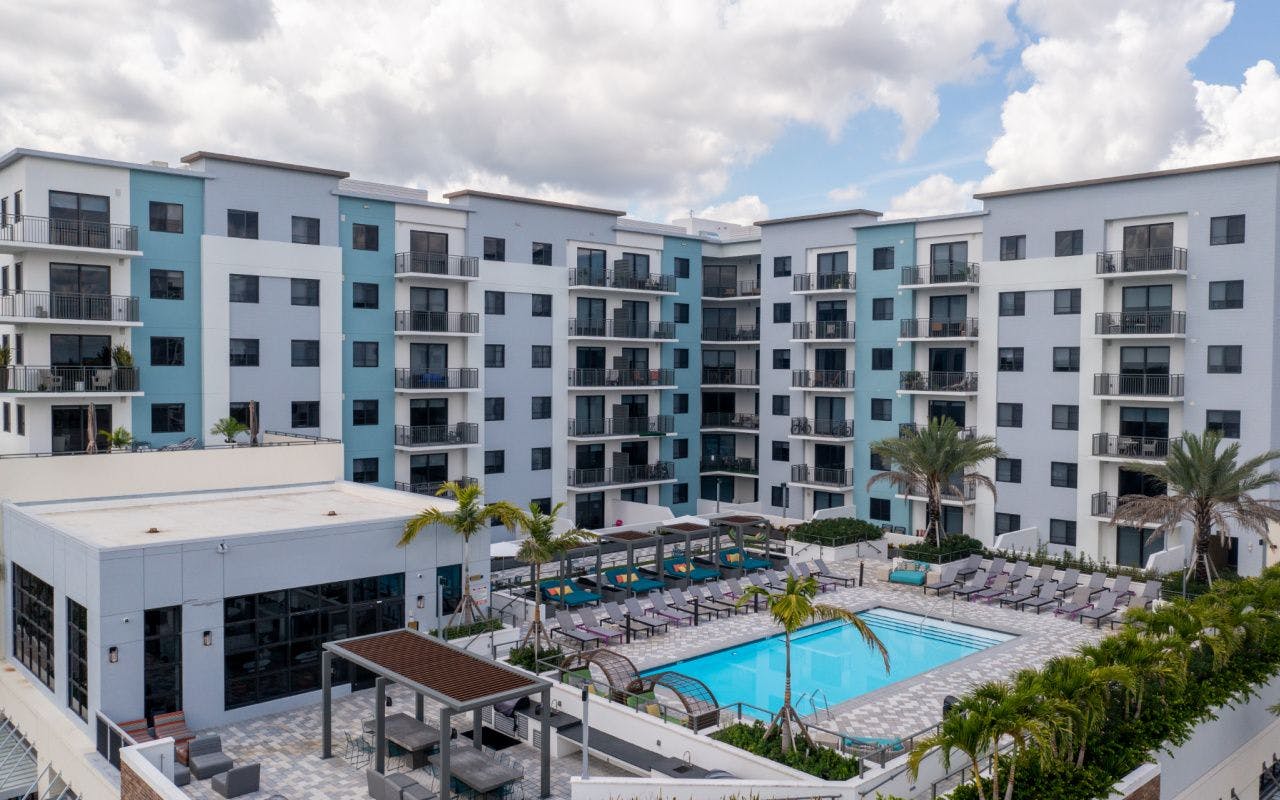
Get Out of the Box: Industry Trends Require Creative Solutions to Challenges
It’s a time for cautious optimism in many parts of the economy and especially the construction industry. Rising costs, supply issues, and labor shortages continue to confront companies across the country. But the industry is very healthy; rather than taking any work just to stay afloat, most general contracting firms can now pick and choose their projects. Clients are bringing forward-looking design projects, including opportunities to “build green.”
Indicators are pointing to a plateau sometime in 2023, where the industry will begin to stabilize and isn’t climbing as much as it is currently due to several factors. Some indicators include the upward cost of land, increased interest rates, escalation, material shortages, and the rents tenants are willing to pay.
More than ever, the industry needs to be nimble to quickly adjust the way to do business and adapt to what is going on in the market and the world. Here’s how to meet the challenges and realize the rewards that the industry will present over the next several months:
FINDING CREATIVE SOLUTIONS
Construction costs are still driving upward due to supply chain issues, transportation cost increases and other factors, including the still lingering direct and indirect impacts of COVID; many companies are still not back to full production. At some point, the cost of construction will not make sense for the proformas being put together by developers, and the industry will slow down. A lot of developers will be pushing to get their projects approved ASAP, before interest rates climb.
The material shortages still have not recovered. If the situation gets much worse, owners may begin to have to secure critical path long lead production slots for critical components to keep schedules reasonable. For example, companies such as Florida-based Kaufman Lynn Construction are paying up-front deposits to trade partners and vendors and are starting these discussions early in the pre-con process prior to the Owner contracts being inked, so there are no surprises.
As most know, the supply chain is not getting better either, so trying proactive solutions like a monthly hot list of cost increases and shortages as they occur in real time in the market is a great option. If there is a shortage of one material, try to think outside the box and look at alternatives that may not have always been used in the past.
There’s also a need to get creative dealing with labor shortages. One idea is to roll out several new incentive programs to entice new employees while retaining current staff. You need to do both in this market because finding that competitive advantage is key to continued success in our current market. Potential candidates working in construction trades have even become those that need to be enticed, as they can be selective in the work they choose, and they look for factors such as commuting time to the job and accessibility once they get there. Keep all this in mind when putting together logistic plans for new projects and have more in-depth discussions with subcontractors up front. Communicating up-front with tradesmen to express what is expected of them and hear their concerns is key to success in this market due to how many jobs are currently under construction and the limited workforce available.
WELCOMING GOOD NEWS
Continue to celebrate–just not too exuberantly.
Great news: The industry will see growth in cities that are continuing to issue high-rise construction permits as high-rise construction makes more sense in urban locations due to the higher land cost. For the numbers to work with the higher land cost, developers will continue to push for more high-rise products. Other firms have begun looking into new locations to develop that do not have such high land cost and are more rural. They are focusing on areas with a lower populace, where land is cheaper in an effort to get in early on what they target as the new hot location. Developers and subcontractors that were originally focused in the south Florida market are now going into other states or different parts of Florida where they were not willing to go previously due to how competitive the real estate market has become.
Great news: Retail construction is back from the near halt forced by the pandemic, and spaces are leasing much more quickly compared to the pre-pandemic market.
Good news: The office sector is interesting; a few new opportunities have appeared recently but not as many as pre-pandemic, presumably due to the number of employees working from home.
Mixed news: The one thing keeping development going in the state of Florida is the continued increase in rentals to justify higher land acquisition costs and construction costs. During the pandemic, there was an influx of businesses and workers escaping high-cost cities such as New York, contributing to high rent increases over the last two years in the south Florida market. A lot of multifamily buildings will continue going up over the next two years because of the high rents that tenants are willing to pay from this influx of other states and countries. But sooner or later, there will be a breaking point.
WHAT’S AHEAD
Given these considerations, the construction industry can thrive if construction companies work to keep up with the needs and goals of clients. A design/development team must be up on new trends as things change and find ways to save on costs while appealing to a large demographic.
For instance, cities are requiring a lot of residential developments to include retail to attract tenants with a more comprehensive lifestyle space. One exciting trend is office space mixed in with residential, no longer are we seeing it predominantly as we once had. Some buildings now require up to 20 percent of the parking spaces to have electric vehicle (EV) chargers to offer this option for the ever-increasing EV market. This could be a deal-breaker when shopping a building to rent from, but eco-friendly requirements like this are becoming more common in South Florida’s public sector.
The construction industry as a whole is going green. For example, materials containing much fewer volatile organic compounds than were once acceptable on site are now being used. Also, outsourcing products and materials closer to job sites to reduce costs associated with fuel and recent shipping container price hikes is important. Companies are also making improvements in safety procedures and protocols as technology in the industry improves.
Mass transit will continue to improve and offers opportunities to benefit those living near transit systems. For example, more and more people will be taking the train to work, not just to reduce cost but also for a better quality of life and to avoid stress when driving. The pandemic opened people’s eyes to this aspect, which was not always the highest priority in the past.
Lifestyle continues to drive the amenities clients desire, and contractors are getting some exciting requests. Wow factors are in demand for multifamily projects to win over tenants and a lot of money is being spent to make the tenants as comfortable as possible. Developers want high-end lighting, plumbing fixtures, hardware and often request to upgrade the appliances. In addition, requests for elaborate common areas and amenities, often with elevated pool decks and dog parks are on the rise. Lounge space, full-scale gyms, and yoga studios have recently been among client requirements.
It’s a delicate balancing act, but the industry can move past the challenges and thrive if aware and ready to think creatively about solutions.
With over 15 years of experience in the construction industry, Josh Zimmerman has managed large-scale commercial projects across multiple categories throughout the Mid-Atlantic and Southeast. As senior vice president of operations, he is responsible for guidance and oversight of the entire lifecycle of assigned construction projects.
Related stories








